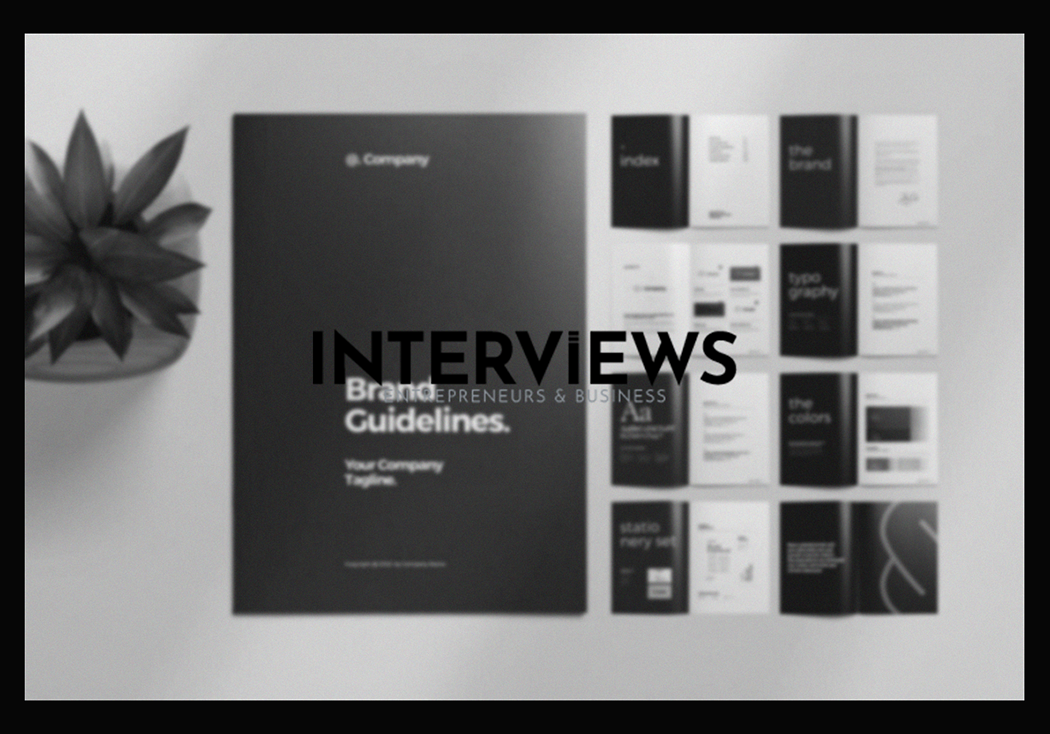So, you want your name on clothing tags? Starting a clothing line can seem glamorous. Runways and photoshoots are part of the dream. But let’s get real. How much is this dream going to cost? What steps should you take? This is your reality check with practical advice.
The Cold, Hard Cash: Startup Costs for Your Clothing Line
Let’s talk money. How much do you need to launch a clothing line? The answer varies. It depends on how big your vision is from the start.
- Tiny Budgets, Big Dreams (Print-on-Demand): You can start for less than $500. If you choose print-on-demand, it’s lean startup territory.
- Stepping It Up (Medium-Scale): A medium-sized clothing line could cost $1,000 to $5,000. This allows for more inventory control without breaking the bank.
- Going Big or Going Home (Large-Scale): For a larger fashion business, expect costs of tens of thousands, potentially $25,000 to $50,000 or more. This is a serious investment.
What do these costs actually cover? Let’s break them down.
- Production Costs: This is ground zero. Think about the fabrics, trims, buttons, and pattern making. Also consider samples and prototypes before actual production begins.
- Manufacturing Costs: Now we make clothes. Costs depend on your production location. Domestic production may cost more than overseas manufacturing. Design complexity also impacts expenses.
- Marketing and Website Costs: You need a website. Consider e-commerce platforms, domains, and marketing materials. Maybe even some paid ads.
- Inventory and Warehousing: You’ll need space for your clothes. Where will you store them? Consider options like your spare room, garage, or a warehouse.
- Legal and Business Costs: Register your business, obtain permits, and consider legal or accounting services to ensure compliance.
If you plan a purely online clothing line, budget $5,800-$17,000. For brick-and-mortar, add substantial costs. Consider $5,000 to $15,000 for initial design work. Branding and marketing may cost another $1,000 to $5,000. In India, startups may expect costs of approximately ₹5 lakh to ₹10 lakh.
The Road Map: Steps to Launch Your Clothing Line
Now that costs are clearer, how do you start your clothing line? It takes more than just good taste. Here are steps to follow.
- Step 1: Crafting Your Battle Plan (Business Plan)
A business plan may sound boring. But it is your roadmap. It acts as your GPS for this journey. Without it, you risk aimless wandering.
- Know Your Crowd (Market Research): Understand your target audience. Who are they? What do they wear? What trends are relevant? Research competitors who are doing similar work.
- Find Your Corner (Define Your Niche): “Clothing line” is a broad term. Are you creating luxury pet sweaters or sustainable streetwear? Get specific.
- Pick Your Path (Business Model): Choose between print-on-demand, dropshipping, or traditional manufacturing. Each has pros and cons.
- Numbers Time (Financial Planning): Budgeting is essential. Know costs, pricing, and profits. Establish how you’ll generate revenue.
- Make it Legal (Legal Structure): Choose a sole proprietorship or LLC. This affects liability and taxes. Consult a professional if needed.
- Step 2: Design Time (Product Line Development)
This part is fun—designing clothes! But creativity needs structure too.
- Stay in the Loop (Inspiration and Trends): Fashion moves fast. Stay updated on trends for fresh designs that feel relevant.
- Sketch It Out (Design and Development): Get your ideas from mind to paper or screen. Design and develop your clothing line with attention to detail.
- Find the Fabric (Fabric Sourcing): The fabric forms clothing’s essence. Source quality fabrics or create your own. This choice affects cost and quality.
- Make it Real (Production and Manufacturing): Set up for production. This transforms designs into garments ready for sale.
- Step 3: Become a Brand (Brand Building)
You’re not just selling clothes; you’re building a brand. Think Apple or Nike; they sell an identity.
- Define Who You Are (Brand Identity): Develop your logo, name, and visual representation. This defines your brand and its emotional impact.
- State Your Purpose (Mission and Values): What does your brand represent? Your mission guides decisions and attracts like-minded customers.
- Tell Your Tale (Storytelling): Share a captivating brand story. Stories foster connection with your target audience.
- Step 4: Get Online (Create an Online Presence)
If you aren’t online, are you a real business? A strong online presence is essential today.
- Set Up Shop (E-commerce Platform): Launch an online store through platforms like Shopify or Etsy. Make purchases easy for customers.
- Your Digital Home (Website): Create a website to validate your brand perception—retailers check for legitimacy.
- Socialize! (Social Media): Build a social media presence. Engage with followers, showcase products, and build community.
- Step 5: Spread the Word (Marketing and Sales)
Your designs need exposure for sales opportunities. Showcase your work effectively.
- Plan of Attack (Marketing Strategy): Formulate a marketing plan reaching the desired audience. How will you attract interest?
- Share the Love (Content Marketing): Create engaging content through blogs, videos, or social media posts. Strive for interaction over pure sales.
- Amplify Your Voice (Advertising): Consider online ads to enhance visibility. Sometimes investment is necessary for growth.
- Make Friends (Public Relations): Cultivate relationships with influential figures or media outlets for free publicity.
- Think Wider (Retail Partnerships): Explore physical store opportunities. Online isn’t the only channel available.
- Step 6: Keep it Running (Ongoing Operations)
The launch is only the beginning. Running a clothing line requires ongoing effort and resilience.
- Happy Customers (Customer Service): Prioritize excellent service to build loyalty and gain positive word-of-mouth.
- Customers return. They are repeat customers.
- Manage Your Stock: Keep inventory levels optimized. Avoid stockouts and excess inventory.
- Watch the Numbers: Track sales performance. Use data to identify improvement areas. Data helps.
- Stay Agile: Adapt to changing trends. Customer preferences shift. Fashion evolves, and so should you.
For a more detailed guide, Gelato has an article on how to start a clothing brand in 12 steps. This guide condenses information.
Legally Blonde: Business Structure & Legalities
Legal matters are crucial. They may not excite you. However, avoiding headaches later is important.
- LLC – Your Shield: Form an LLC for your clothing brand. It protects personal assets from lawsuits. While not mandatory, it’s a wise step for protection.
- Copyright – Protect Creations: Avoid using copyrighted materials. This includes logos and characters without permission. Use stock photos to stay compliant unless creating original art.
Mekiplaw has a guide on registering clothing brand trademarks. Read it before committing to a name!
Broke But Ambitious? Starting on a Shoestring
No trust fund? Student loans? You can start a clothing line on a budget.
- Print-on-Demand & Dropshipping: Use low-risk models. These methods suit clothing businesses and save funds. No inventory to hold!
- Embrace Free Tools: Utilize open-source software. Many free alternatives exist for design and website building.
- On-Demand Products: Focus on products made when ordered. This approach minimizes costs.
Wix offers some clothing business ideas that might inspire you. Check their fashionable ideas for budget-friendly options.
Reality Bites: Challenges You’ll Face
No sunshine and rainbows here. Starting a clothing brand brings challenges.
- Cutthroat World: The fashion industry is highly competitive. Many brands exist, and new ones appear daily.
- Money Pit Potential: Starting this business can be costly. Design and marketing costs add up.
- Sourcing Nightmares: Finding reliable manufacturers is tough. Sourcing quality materials can be a headache.
- Getting Noticed: Building brand identity takes strategy and effort.
- Greenwashing Concerns: Customers favor sustainable brands. This adds complexity and costs.
Building a Brand That Sticks
How do you create a lasting brand?
- Know Thyself:
- Brand Story: What is your brand’s story? What values and mission do you hold?
- Unique Value Proposition: Identify what makes your brand stand out. What unique selling points do you have?
- Know Your Customer:
- Needs, Desires, Behaviors: Who is your target audience? Understand their preferences. Design with them in mind.
- Be Everywhere:
- Memorable Name, Logo: Create consistent branding. A memorable logo and brand assets are essential.
- Brand Style Guide: Develop a guide to maintain consistency across platforms.
- Get the Word Out:
- Marketing Channels: Utilize various channels like social media and email. Build relationships through engaging content.
- Catchy Sayings: Create a catchy slogan that embodies your brand.
- Visual Punch: Your logo is key. Keep it impactful and recognizable.
Designs and Production Deconstructed
Let’s break down collections and production.
- How Many Styles?
- Start Small: Aim for 3 – 8 styles in your first collection when doing womenswear.
- Minimum Collection Size: Usually, a fashion collection should have at least 12 pieces, but it’s flexible.
- Good Starting Point: A capsule collection of around 8 pieces is reasonable. Avoid overwhelming yourself.
- Skills Not Required: You don’t need sewing or drawing skills to start a clothing line. Seriously, you can begin without them.
- Get Help: Hire freelance designers or use software tools like Adobe Illustrator for your designs. Outsourcing is an option.
- The Process: Design your clothing line, source fabrics, and set up production. That’s the overview.
Profits, Trends, and the Market Maze
Cand your venture be profitable? Let’s examine the market landscape.
- Profit Margins: Profit margins usually range from 40% to 60% for retail clothing. That’s the target.
- Crowded House: The clothing market is highly saturated. It’s hard to thrive in this environment.
- What’s Hot: Athleisure is now in vogue. Consider current trends in your designs.
Stocking Up: Boutique Inventory Sourcing
If you plan to open a boutique, where will you source clothing?
- Wholesalers: They buy from manufacturers and sell in bundles. This is a classic method of sourcing.
- Manufacturers Direct: Some boutiques deal directly with manufacturers. This can offer more control but may complicate things.
- Trade Shows: Attend trade shows to find new brands and suppliers. Stay up to date with trends.
- Independent Designers: Sell unique pieces from independent designers for a curated feel.
- Consignment Deals: Some boutiques sell consignment pieces. This reduces upfront risk.
- Online Wholesale Marketplaces: Platforms like Faire connect you with wholesale suppliers, easing business processes.
Fabric Fundamentals
Fabric serves as the foundation of your garments.
- Fabric Knowledge: Understand how fabric is made and its construction. This knowledge benefits your designs.
- Sourcing Methods: Explore various sourcing options: agents, direct, jobbers.
- Plan Ahead: Develop fabric sourcing plans to outline needs and strategies. Planning is crucial.
Online Store Essentials
Setting up your store? Keep these essentials in mind:
- Building a Website: It must be user-friendly and visually appealing.
- Payment Processing: Offer secure payment options for customers.
- Marketing and Promotion: Increase traffic to your online store.
Licenses, Permits, and Legalities
Ensure you have required licenses and permits:
- Business License: A license is often needed to operate legally. Confirm requirements by location.
- Registering Your Business: Make your business official with proper registration.
- Trademarks: Protect your brand name and logo through registration.
- Slogans: These can also be trademarked.
- Logo: Trademark your logo for added security!
Sustainable Side Hustle: Selling Used Clothes
Consider selling used clothes on platforms like thredUp or eBay. It can lead to lower barriers to entry into fashion while promoting sustainability.
Your journey to starting a clothing line is long and exciting. It can be challenging but requires more than just good taste. With careful planning, persistence, and creativity, your fashion dreams can become reality. Now, go create something amazing!





